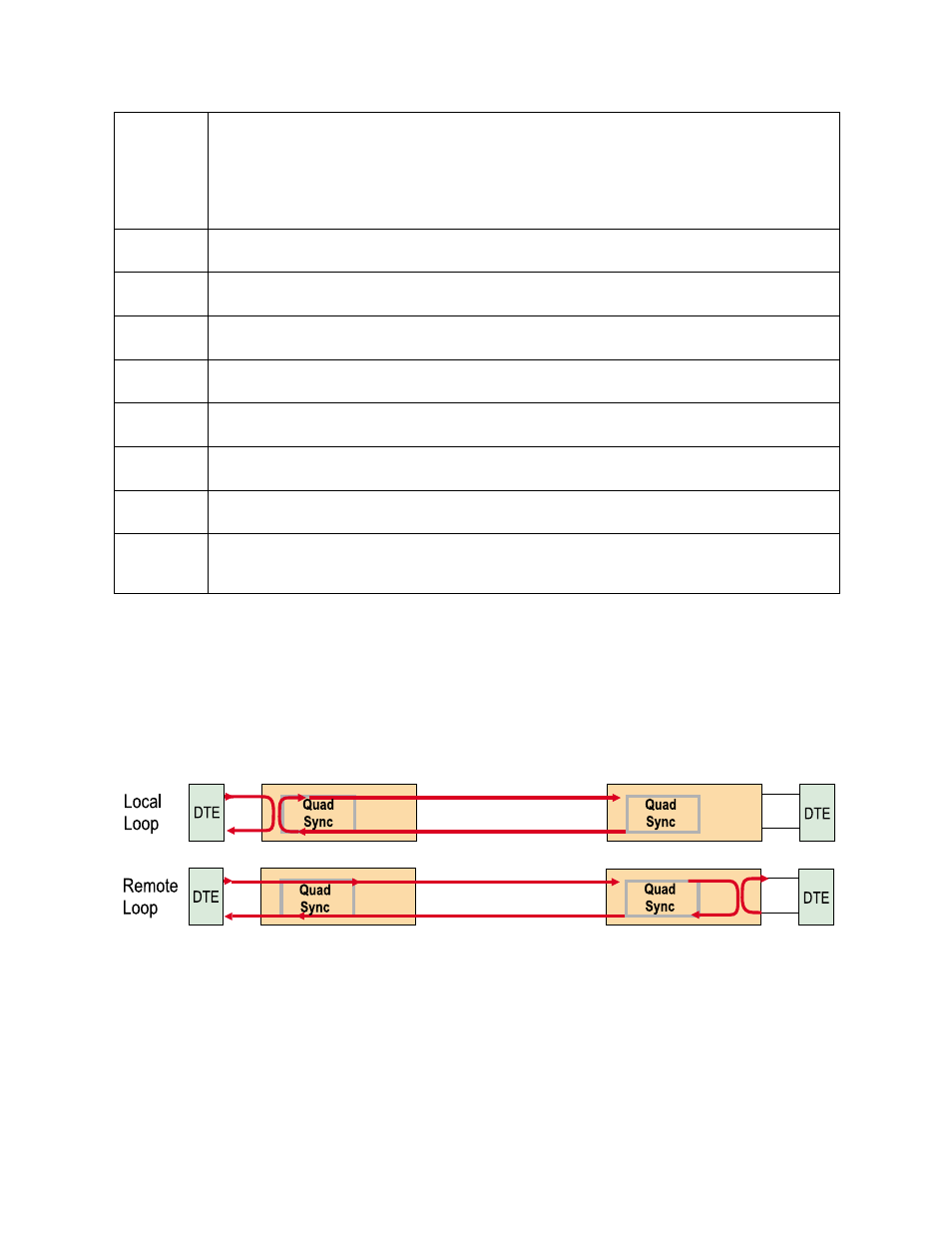Verilink AS4000 (34-00244) Product Manual User Manual
Page 106

Quad Port Sync Data Module
6-6
Verilink AS4000 User Manual
More About
Loopbacks
Local Loop and Remote Loop on the Quad Port Sync Data module
are both bi-directional loopbacks. If everything is working as
expected, for either loopback, the local and remote DTE should
receive its own data stream. Devices capable of detecting and
reporting a loopback should indicate either type of loop.
The data flow for local and remote loops is indicated in
.
Figure 6-6 Quad Port Sync Data Loopbacks
BERT
This is useful to test for errors on the communication circuit. The device checks for errors
by comparing a received data pattern with a known transmitted data pattern to determine
line quality.
The remote loop and data test patterns depend on interface clocks to operate. If Int/Ext or
External timing options are selected, ensure the External Clock is present and locked to the
AS4000 system clock.
Seconds in
Test
This read-only count represents the number of seconds the module was in test.
Local
Errors
This read-only count represents the number of local errored seconds that occurred while the
data module was in test.
Remote
Errors
This read-only count represents the number of remote errored seconds that occurred while
the module was in test.
TX/RX Data These fields indicate whether your Quad Port Sync Data module is transmitting or receiving
data over its serial port interface.
RTS/DCD
If RTS is On, the DTE is presenting the control lead Request To Send. If DCD is On, your
Quad Port Sync Data module is asserting Data Carrier Detect to the DTE.
DTR/DSR
If DTR is On the DTE is presenting the control lead Data Terminal Ready. If DSR is On, your
Quad Port Sync Data module is asserting Data Set Ready to the DTE.
[R]eset
counts
This command allows you to clear your counters.
Insert
[e]rrors
For test purposes, you can insert BERT errrors. This is done to verify the port is receiving its
own test pattern, rather than a test pattern from some other source in the network. It is
useful for verifying that a loopback does exist in the circuit path.